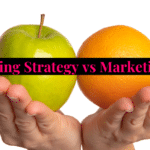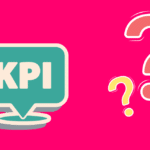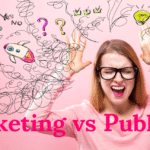When you hear the words “marketing” and “publicity,” you might think they’re the same thing. In reality, they’re two different tools that businesses use to grow and engage their audience.
Marketing is a broader concept that includes advertising, sales, and public relations. It’s a strategic process that businesses use to communicate their products or services to potential customers. Publicity, on the other hand, is a specific aspect of marketing. It involves getting your business mentioned in the media and other public forums. It’s often a more indirect way of getting your message out there, and it can be incredibly powerful if used effectively.
In this article, we’re going to explore the key differences between marketing and publicity, and how you can use both to boost your business.
Let’s go!
What is the Difference Between Marketing and Publicity?

Let’s just clarify things a little further.
Marketing is the overall process of promoting and selling products or services. It includes market research, advertising, and building relationships with customers.
Publicity is a specific part of marketing that focuses on getting a business, person, or product mentioned in the media. This can include traditional media like newspapers and magazines, as well as digital media like websites and social media.
So, both marketing and publicity aim to increase brand awareness and ultimately drive sales, but they do so in different ways.
Let’s explore these differences in more detail:
1. Marketing is a Broad Concept

Marketing is a broad concept that involves all the strategies and activities a business uses to promote its products or services and build relationships with customers.
Marketing involves the following key components:
- Market Research: The process of gathering, analyzing, and interpreting information about a market, including customer needs, preferences, and behaviors.
- Product Development: The process of creating or improving a product to meet the needs of a specific market.
- Pricing: The process of determining the right price for a product or service that will both attract customers and generate a profit.
- Advertising: The process of creating and delivering messages to promote a product or service, typically through paid channels.
- Sales: The process of persuading customers to purchase a product or service.
- Customer Relationship Management (CRM): The process of managing and maintaining relationships with customers to ensure their satisfaction and loyalty.
- Public Relations (PR): The process of managing a business’s reputation through communication with the media, stakeholders, and the public.
- Digital Marketing: The use of digital channels, such as social media, email, and search engines, to promote products or services.
- Content Marketing: The creation and sharing of valuable, relevant content to attract and engage a target audience.
Now, let’s tackle the world of publicity.
2. Publicity is a Specific Aspect of Marketing

Publicity is a specific aspect of marketing that involves creating awareness and generating interest in a product, service, or brand by getting it mentioned in the media or other public forums.
This can include traditional media like newspapers and magazines, as well as digital media like websites and social media.
Publicity often relies on more indirect and organic methods to get your message out there and can be an incredibly powerful way to build credibility and trust with your audience.
It’s also an essential component of any integrated marketing communication strategy, which aims to provide a consistent and unified brand message across all communication channels.
Publicity involves the following key components:
- Media Relations: Building and maintaining relationships with journalists and other media professionals to secure coverage for a business or product.
- Press Releases: Crafting and distributing newsworthy information about a business or product to the media in the hopes of getting coverage.
- Event Planning: Organizing events, such as product launches or press conferences, to generate media coverage and public interest.
- Crisis Management: Handling negative publicity or media crises to protect a business’s reputation.
- Influencer Marketing: Collaborating with individuals who have a large following on social media to promote a business or product.
- Word-of-Mouth Marketing: Encouraging satisfied customers to share their positive experiences with others.
- Community Engagement: Getting involved in local or online communities to build relationships and generate positive word-of-mouth.
Ok, so now you have a good idea of what both are, let’s explore how they intersect and, well, don’t.
3. How Marketing and Publicity Differ

Both marketing and publicity aim to increase brand awareness and ultimately drive sales, but they do so in different ways.
Marketing involves a more direct approach, often using paid channels like advertising to deliver specific messages to a target audience.
Publicity, on the other hand, is more indirect and relies on getting a business, person, or product mentioned in the media to create awareness and interest.
Here are some of the key differences between marketing and publicity:
- Control: With marketing, a business has more control over the message and where it’s delivered. With publicity, a business has less control and is at the mercy of the media and other public forums.
- Timing: Marketing messages can be delivered on a schedule that works for the business. Publicity is often more dependent on outside factors, like when a journalist decides to write a story.
- Credibility: Marketing messages can sometimes be seen as biased because they’re coming directly from the business. Publicity can be more credible because it’s coming from a third-party source, like a news outlet.
- Reach: Marketing can be targeted to a specific audience. Publicity has the potential to reach a wider audience, but it’s also more unpredictable.
- Cost: Marketing often involves paid channels, so it can be more expensive. Publicity, if done well, can be a more cost-effective way to get your message out there.
So, how do they work together to create a killer marketing strategy?
Let us explain.
4. How to Use Marketing and Publicity Together

While marketing and publicity have their differences, they can be incredibly powerful when used together.
By combining the direct and targeted approach of marketing with the indirect and potentially wide-reaching approach of publicity, a business can create a comprehensive and effective strategy for increasing brand awareness and driving sales.
Here are five ways you can use marketing and publicity together:
- Integrated Marketing Communication (IMC): Develop an IMC strategy that combines the various aspects of marketing, including advertising, sales, and PR, to deliver a unified and consistent brand message.
- Content Marketing: Use content marketing to create valuable and shareable content that can be used in both marketing and publicity efforts. For example, an informative blog post can be shared on social media and may also catch the attention of a journalist.
- Influencer Marketing: Collaborate with influencers who can help promote your brand or product through their own marketing efforts and who may also be able to generate publicity for you.
- SEO: Optimize your content for search engines to increase the chances of it being discovered by both your target audience and the media.
- Leverage Social Media: Use social media as a tool for both marketing and publicity. Share marketing messages with your followers and engage with journalists and other media professionals to increase the likelihood of getting coverage.
By understanding the differences between marketing and publicity and how they can work together, you can develop a more comprehensive and effective strategy for reaching and engaging your audience.
More of a video type of learner, this clip explains things really well in further detail:
Now it’s time to wrap up this article, but before we do, let’s look at how marketing and publicity intersect in the real-world
Real-World Case Study

We’ll look into an incredible case study of the giant created by Steve Jobs, aka Apple.
Here are 8 ways that Apple perfectly ( well just about) entwines marketing and publicity.
1. The Art of Mystery and Anticipation
In the enchanted forest of Apple’s strategy, secrecy is the spell that binds all.
This tech titan, masterfully keeps its treasures hidden, only to unveil them when the time is right and everyone ( us included) is excitedly waiting for a release!
This approach whips up a whirlwind of speculation and anticipation, making every whisper of a new product a siren’s song to the ears of consumers and media alike.
2. The Stagecraft of Unforgettable Keynotes
Ok, we have all seen a keynote from the late Steve Jobs, inspiring, impressive, and motivating, to say the least!
Apple’s keynotes are where technology meets drama, and every announcement is a standing ovation, wll most of them.
Apple really transforms the mundane into the magnificent, turning product launches into cultural events that draw viewers from around the globe, eager to be part of the next big reveal.
3. The Symphony of Emotionally Charged Advertising
Apple’s advertising campaigns are like heartwarming tales told by the fireside. They weave stories that resonate deep within our souls, illustrating not just the features of a product, but the dreams and aspirations it could fulfill.
This isn’t just marketing; it’s the creation of a longing, a yearning to be part of something bigger, something beautiful—a lifestyle that reaches beyond the mere possession of a gadget.
4. The Star-Studded Parade of Influencers and Endorsements
In Apple’s world, stars shine bright, lending their light to illuminate the brand’s wonders.
By aligning with influencers and celebrities, Apple adds layers of glamour and credibility, making its products not just items of desire, but icons of modern culture.
5. The Massive Level of Community Engagement
Apple’s realm thrives on the power of community—a place where users don’t just buy a product; they join a family.
Through forums, social media, and user-generated content, Apple nurtures a sense of belonging, turning individual stories into a collective narrative.
This engagement is the heartbeat of the brand, a testament to the loyalty and passion that Apple inspires.
6. The Masterful Choreography of Timing and Seasonal Releases
When it comes to timing, Apple is king, timing its product releases to match the ebb and flow of consumer desires and market rhythms.
This strategic timing ensures that Apple’s creations emerge just when the world is most eager to embrace them, turning each launch into an event that’s not just anticipated but celebrated.
7. The Clever Game of Leaks and Whispers
In a twist of intrigue, Apple turns potential spoilers into pawns in its grand strategy.
By managing leaks with a blend of secrecy and revelation, Apple stokes the flames of curiosity, keeping the brand a mystery while feeding the public’s hunger for just a glimpse behind the curtain.
8. The Architecturally Designed Retail Theater
Step into an Apple store, and you enter a realm where technology transcends the ordinary, becoming an experience, an adventure.
These spaces, designed with minimalist elegance, are not mere shops but sanctuaries where the Apple ethos comes to life, greeting visitors in an atmosphere that’s as much about discovery as it is about purchase.
In blending these strategies, Apple does not merely sell products; it builds dreams and carves memories into the hearts of its audience.
Apple’s public relations and marketing work together effortlessly, well we think so.
Says the guy typing on his Macbook Pro, whilst charging his iPhone and listening to tunes on his Airpods, yep, whatever Apple is doing is working!!
Wrap Up

While marketing and publicity have their differences, they’re both essential tools in a business’s toolkit.
Marketing allows a business to directly control and target its messages, while publicity can provide a more indirect and potentially wider-reaching way to get a message out there.
Now that you understand these differences and how they can be used together, you can create a more comprehensive and effective strategy for increasing brand awareness and most importantly, driving sales!
Happy marketing peeps!
Frequently Asked Questions

In this section, you’ll find some frequently asked questions you may have when you try to distinguish between marketing and publicity.
What is the role of publicity in marketing?
Publicity is a subset of marketing and is primarily concerned with gaining exposure and creating a positive public image for a product, service, or organization.
It involves creating newsworthy stories, events, or content that are shared through various media channels, such as print, digital, or social media.
Publicity helps in brand building and can also influence public perception and customer behavior.
How does marketing differ from advertising?
Marketing is a broad term that encompasses a wide range of activities, including advertising.
Advertising is a specific marketing activity that involves creating and delivering promotional messages to target audiences through various media channels.
Marketing, on the other hand, includes activities such as market research, product development, pricing, distribution, and customer relationship management in addition to advertising.
What is the main goal of marketing?
The main goal of marketing is to create and maintain mutually beneficial relationships between an organization and its target customers.
Marketing aims to understand customer needs and wants, develop products or services that meet those needs, and effectively communicate the value of those products or services to the target audience.
Ultimately, marketing seeks to drive customer acquisition, retention, and satisfaction while also generating profits for the organization.
How can a business effectively promote itself?
To effectively promote itself, a business should:
- Identify its target audience and understand their needs and preferences.
- Develop a unique value proposition that differentiates the business from competitors.
- Create a marketing strategy that includes a mix of advertising, publicity, sales promotions, and other marketing activities.
- Utilize various marketing channels, such as digital media, social media, print, and events, to reach the target audience.
- Continuously monitor and measure the effectiveness of marketing activities and adjust the strategy as needed.
What are the different types of marketing?
There are several different types of marketing, including:
- Digital marketing: Utilizes digital channels such as the internet, social media, email, and search engines to reach and engage with target audiences.
- Content marketing: Focuses on creating and distributing valuable, relevant, and consistent content to attract and retain customers.
- Social media marketing: Involves using social media platforms to promote products and services, engage with customers, and build brand awareness.
- Influencer marketing: Collaborates with influential individuals or organizations to promote products or services to their audience.
- Email marketing: Uses email to communicate with potential and existing customers, promote products, and build customer relationships.
- Search engine marketing (SEM): A type of digital marketing that aims to increase a website’s visibility in search engine results through paid advertising and search engine optimization.
- Event marketing: Involves promoting products or services through participation in or sponsorship of events.
What are some examples of marketing?
Some examples of marketing include:
- A company launching a new product and using advertising, social media, and public relations to create awareness and generate interest.
- A restaurant offering a discount or special promotion to attract new customers.
- A car dealership running a radio or television ad to promote a sales event.
- A clothing brand partnering with a popular influencer to showcase their products on social media.
- A software company creating a free eBook to educate potential customers and generate leads.
- A travel agency organizing a group tour and promoting it through email marketing and social media.
- A technology company sponsoring a trade show to showcase its latest products.










